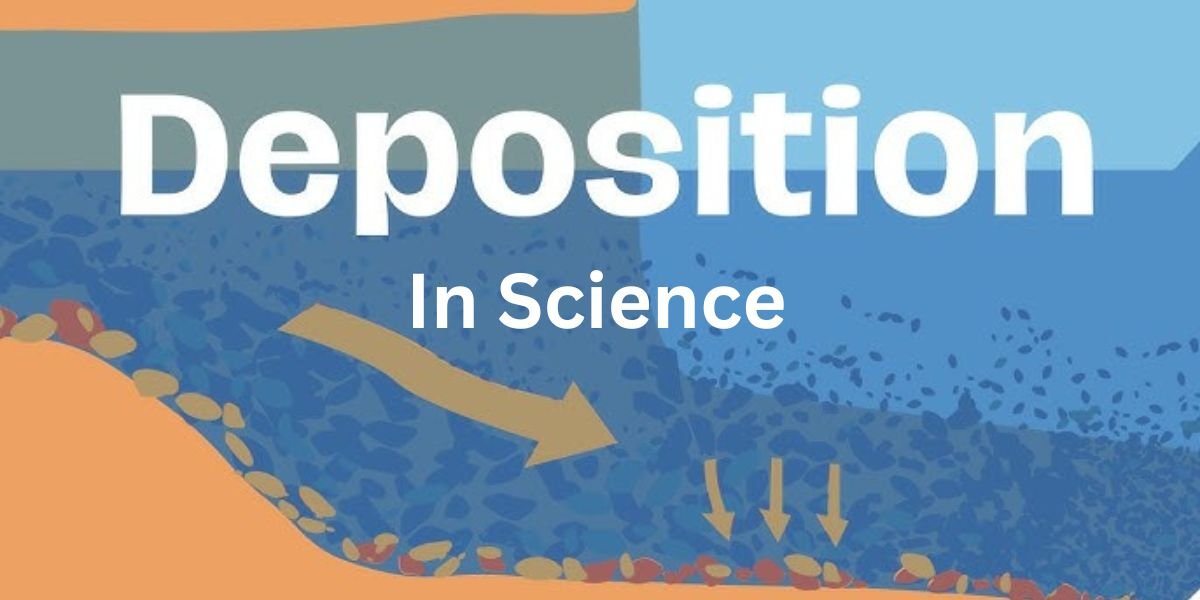In science, deposition refers to a process where substances change from one state to another or settle out of a medium. The meaning of deposition can change depending on the context, particularly in physics, chemistry, geology, and earth science.
1. Deposition in Chemistry and Physics
- Definition: In this context, deposition signifies the direct transformation of a substance from its gaseous state into a solid state without undergoing an intermediate liquid phase. This process is essentially the reverse of sublimation.
Mechanism:
- When a gas encounters a sufficiently cold surface or experiences a significant drop in temperature, its molecules lose kinetic energy.
- This energy loss causes the molecules to slow down and attract each other more strongly.
- Eventually, the attractive forces overcome the kinetic energy, leading to the formation of solid particles directly from the gaseous phase.
Examples:
- Frost Formation: Water vapor in the air, upon encountering a cold surface (like a windowpane), directly transforms into ice crystals, forming frost.
- Snow Formation: High in the atmosphere, water vapor undergoes deposition due to extremely low temperatures, forming ice crystals that aggregate to create snowflakes.
- Cirrus Cloud Formation: These wispy, high-altitude clouds consist primarily of ice crystals formed through deposition.
Microgrooves Control Frost Formation
Deposition in Geology and Earth Science
- Definition: Here, deposition refers to the accumulation or settling of sediments (such as sand, silt, clay, and gravel) transported by agents like wind, water, or ice. This process is a fundamental component of the rock cycle, shaping the Earth’s surface over geological timescales.
Factors Influencing Deposition:
- Velocity of the Transporting Agent: As the velocity of a transporting agent (e.g., river current, wind) decreases, its capacity to carry sediment diminishes. This leads to the deposition of larger and heavier particles first, followed by finer particles as the velocity further decreases.
- Changes in Gradient: A sudden decrease in the slope of a riverbed or a change in wind direction can cause a reduction in velocity and subsequent sediment deposition.
- Obstacles in the Path: Obstacles like rocks, vegetation, or changes in coastline can disrupt the flow of the transporting agent, leading to sediment accumulation.
Examples:
- Deltas: Formed at the mouth of rivers where they meet a larger body of water. The reduced velocity of the river causes sediments to settle, creating a triangular or fan-shaped landmass.
- Sand Dunes: Wind-blown sand accumulates in areas where wind speed decreases, forming dunes of various shapes and sizes.
- Glacial Moraines: As glaciers move, they carry rocks and debris. When the glacier melts or retreats, these materials are deposited, forming moraines of different types (terminal, lateral, medial).
- Alluvial Fans: Cone-shaped deposits of sediment formed where a stream emerges from a confined channel (like a canyon) onto a relatively flat area.
Examples:
- Frost forming on a cold window pane: This is a classic example of deposition in action. Water vapor in the air directly transitions from a gas to a solid (ice) upon contact with the cold window surface.
- Snow and Clouds: Snow forms when water vapor in the atmosphere directly freezes into ice crystals without passing through the liquid phase. Similarly, many types of clouds, like cirrus clouds, are composed of ice crystals formed through deposition.
- Sand dunes: While not a direct phase change, sand dunes are a prime example of deposition in geology. Wind carries sand grains and deposits them in areas where the wind slows down, creating these impressive formations.
These examples highlight the diverse ways in which deposition occurs in nature, both in terms of phase changes and the accumulation of matter.
Key Points:
- Deposition in chemistry and physics involves a phase change from gas to solid.
- Deposition in geology and earth science involves the accumulation of sediments.
- Both processes play important roles in shaping the natural world.
In a Nutshell
Deposition, in both its chemical/physical and geological contexts, is a significant process that plays a crucial role in shaping our planet. It contributes to the formation of diverse landscapes, influences weather patterns, and plays a vital role in the continuous cycle of matter on Earth.









